Life Tables and Population Dynamics in Ecology
1/122
There's no tags or description
Looks like no tags are added yet.
Name | Mastery | Learn | Test | Matching | Spaced |
|---|
No study sessions yet.
123 Terms
What is the purpose of a life table in ecology?
To summarize the survival and reproductive rates of individuals at different ages in a population.
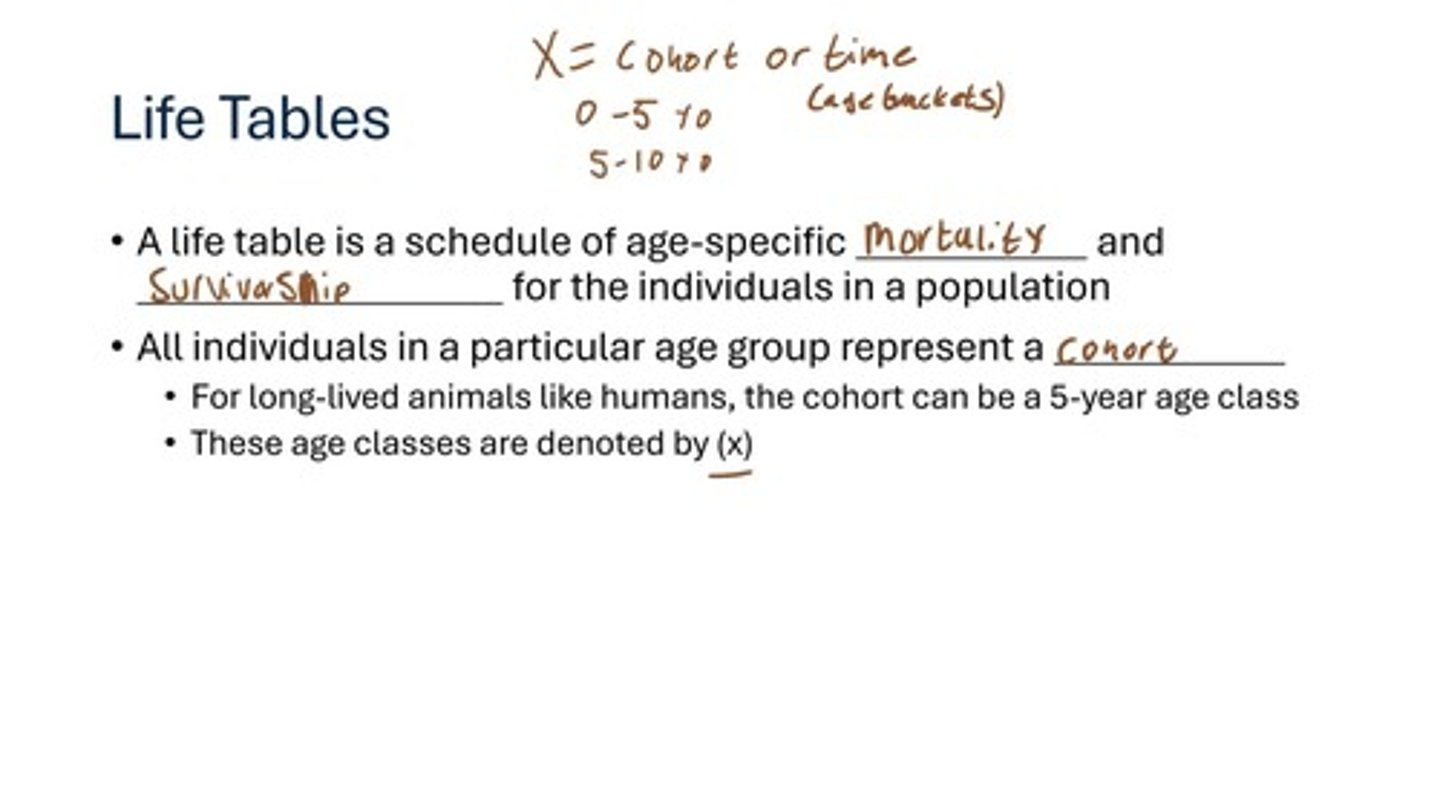
What is a cohort life table?
A life table that tracks a specific group of individuals across their lifetime.
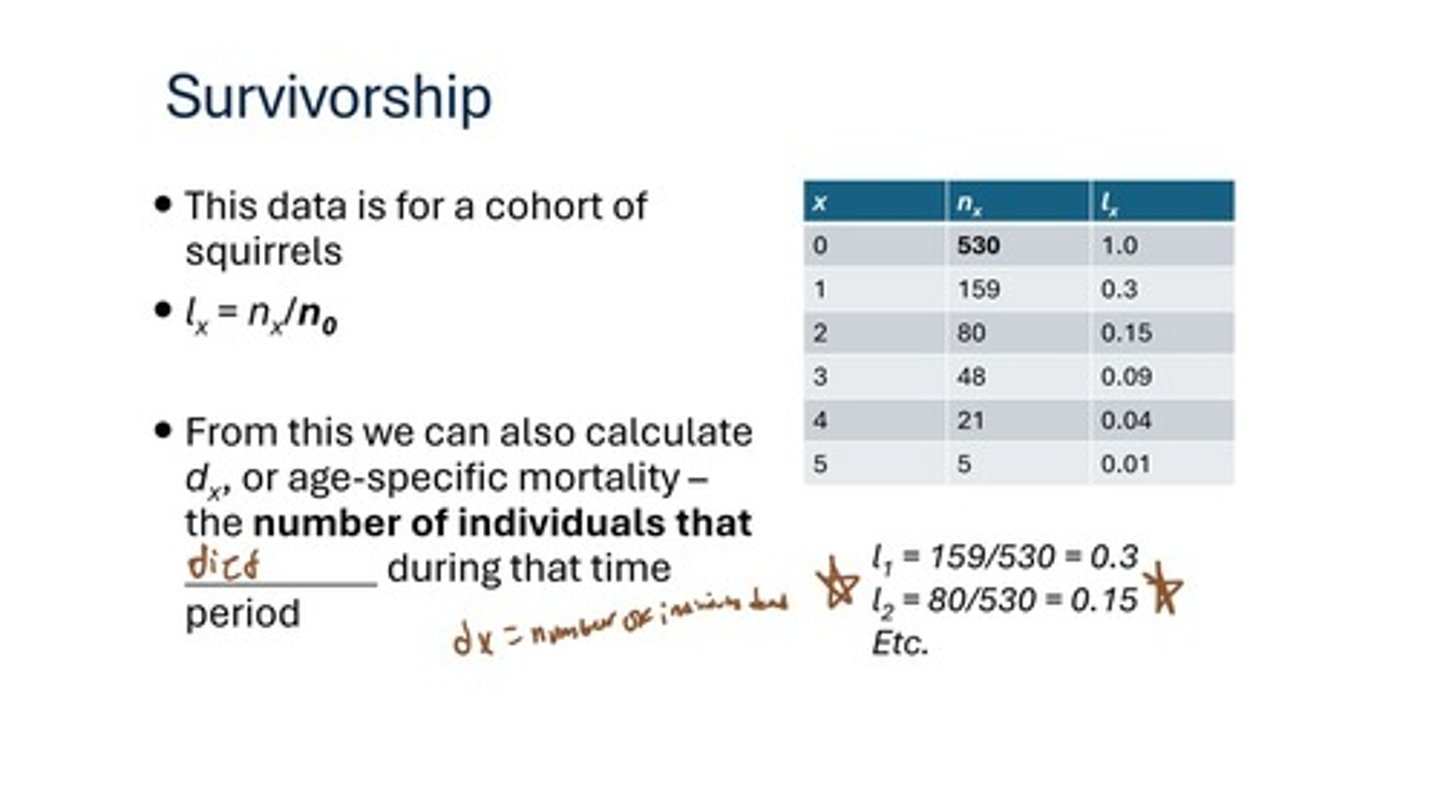
What is a time-specific life table?
A life table that uses age-distribution data from a population at a specific time.
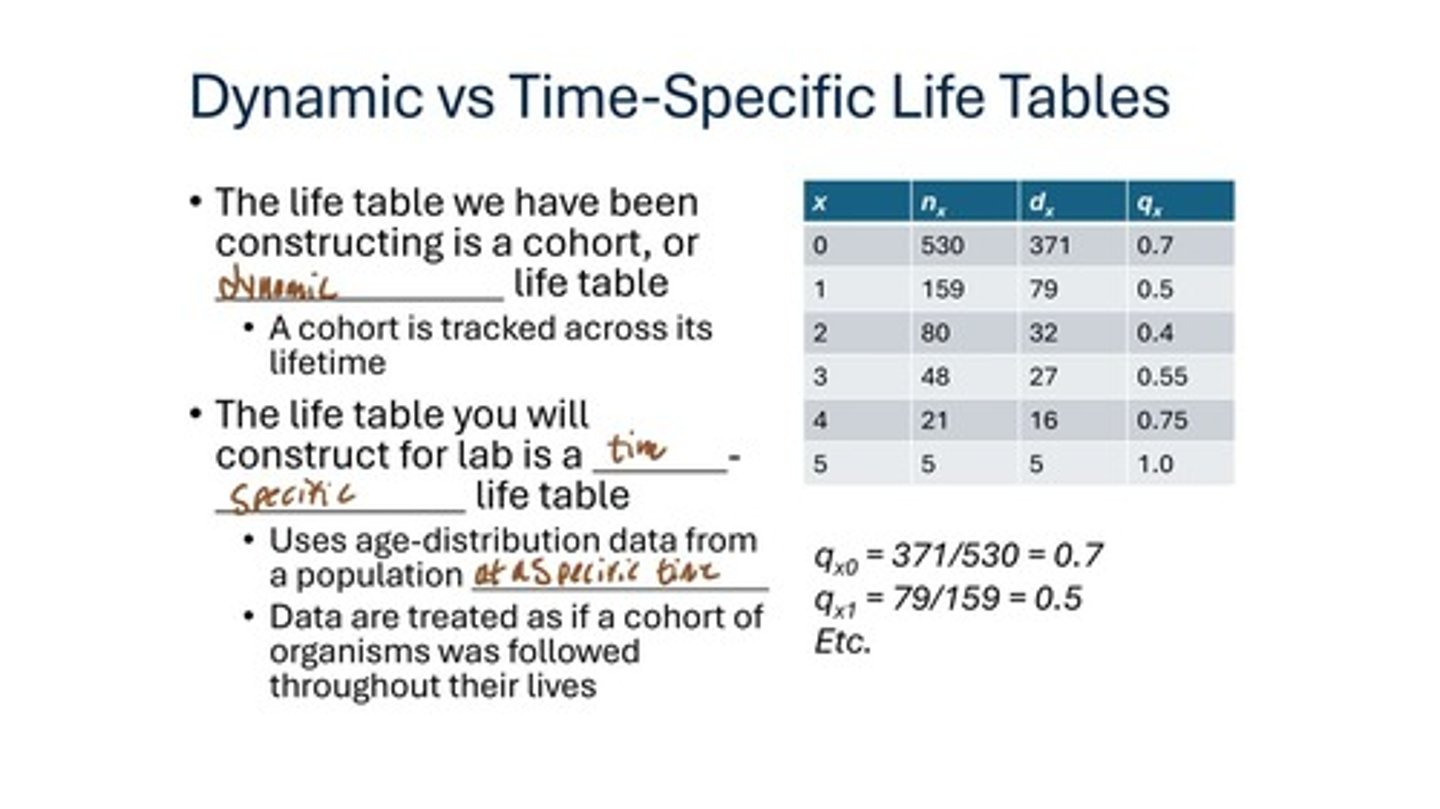
How is the proportion alive at the start of the year calculated?
It is calculated as the number alive at the start of the year divided by the total number of individuals.
What does the term 'nx' represent in a life table?
The number of individuals alive at the start of age class x.
What does 'dx' signify in a life table?
The number of individuals that died during the age interval.
How is the age-specific mortality rate (qx) calculated?
qx = dx/nx for any age category.
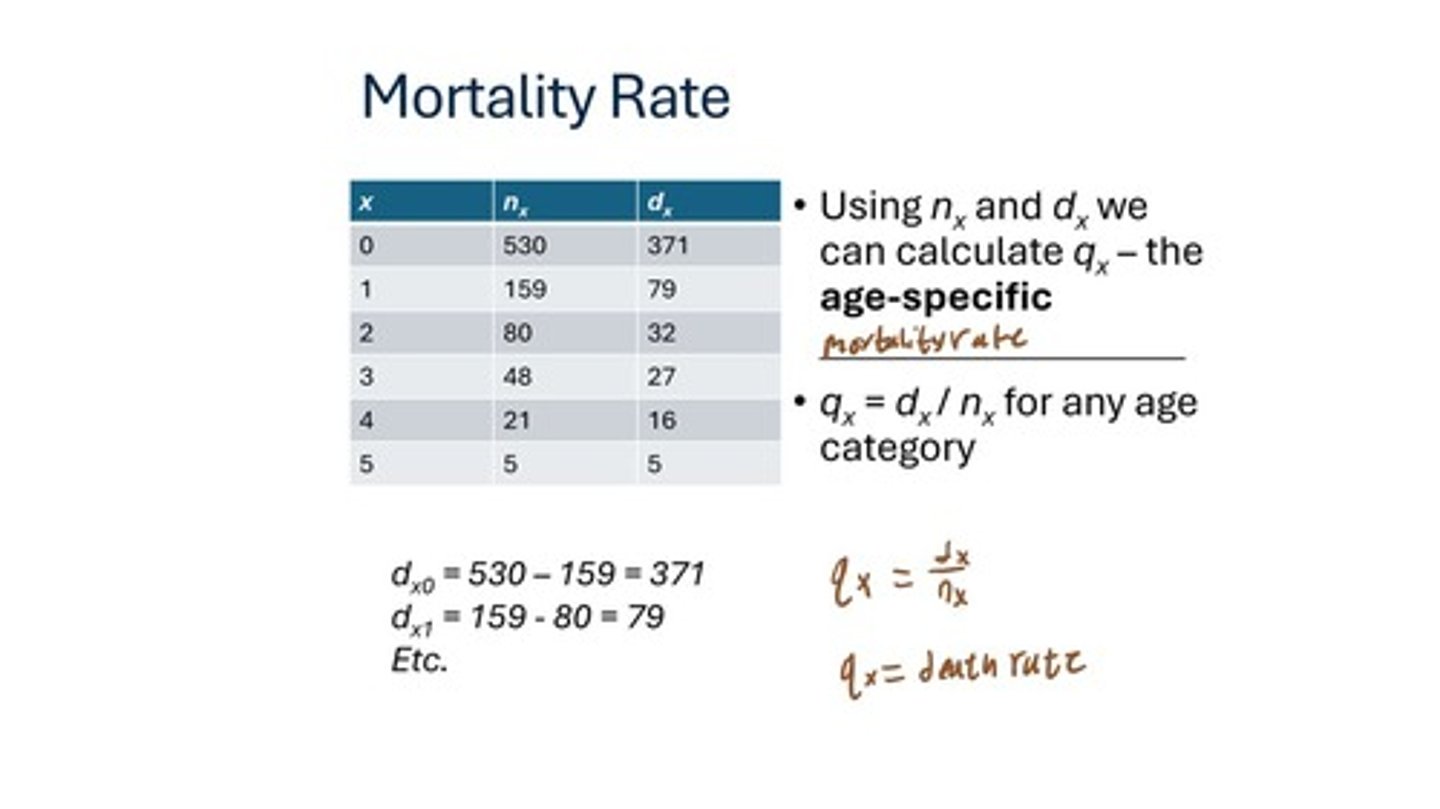
What does 'lx' represent in the context of survivorship?
The proportion of individuals surviving to age x, calculated as nx/n0.
What is the average life expectancy (ex) for an age class?
It is calculated as the total future years lived (Tx) divided by the number of individuals alive at the start of that age class (nx).

How is 'Lx' calculated in a life table?
Lx = (nx + nx+1)/2, representing the average number of individuals alive during the age interval.
What is the significance of 'Tx' in a life table?
Tx is the total future years lived by all individuals of age class x in the population.
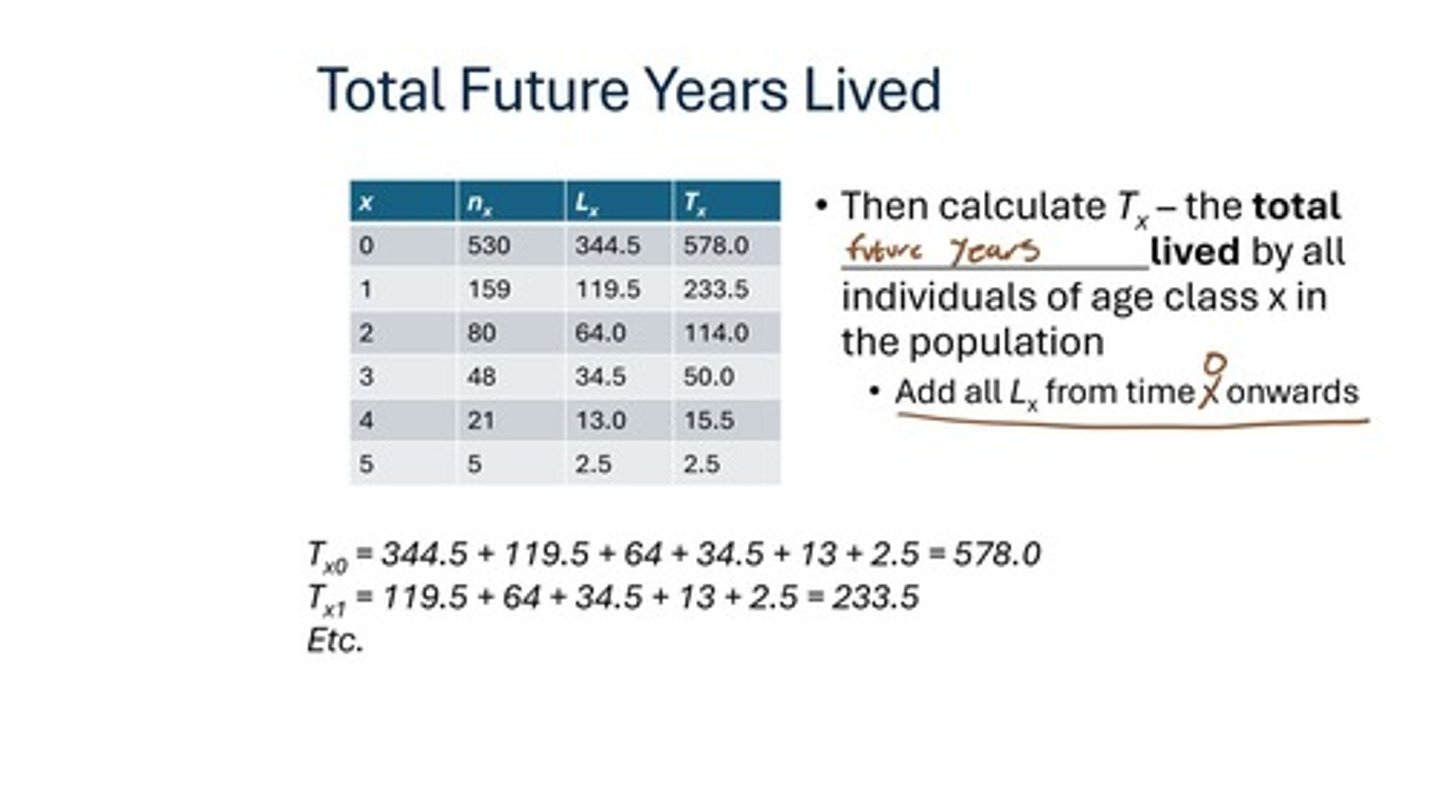
What does the mortality rate indicate?
It indicates the likelihood of death within a specific age category.
What is the average life expectancy for Belding Ground Squirrels at age 0-1?
1.33 years.
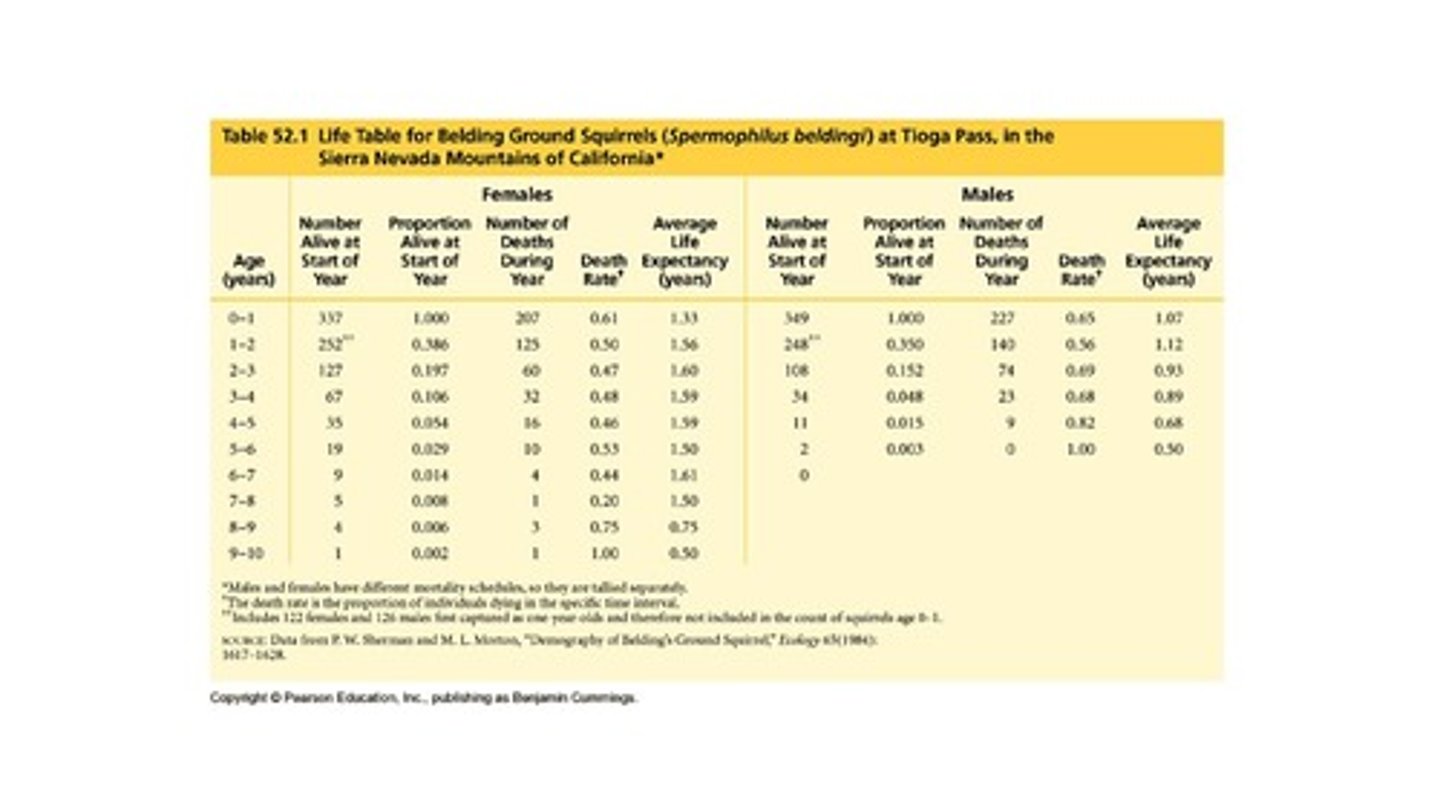
What is the average life expectancy for Belding Ground Squirrels at age 5-6?
1.59 years.
What was the number of Belding Ground Squirrels alive at the start of the year for age class 0-1?
337 individuals.
What is the death expectancy rate for Belding Ground Squirrels at age 8-9?
0.20 years.
What does the term 'proportion alive' indicate in a life table?
It indicates the fraction of the population that survives to the beginning of each age class.
What is the average life expectancy for male Belding Ground Squirrels at age 1-2?
1.47 years.
What is the average life expectancy for female Belding Ground Squirrels at age 6-7?
1.50 years.
What is the total number of future years lived (Tx) for age class 0?
578.0 years.
What is the average number of individuals alive during age interval 2-3 (L2)?
64.0 individuals.
What is the mortality rate for age class 0-1?
0.7.
What is the mortality rate for age class 1-2?
0.5.
What does nx represent in a life table?
The number of individuals alive at the beginning of the time period.
What is the significance of age cohorts in life tables?
Age cohorts represent groups of individuals within a specific age range, such as 5- or 10-year-olds.
How is the probability of surviving calculated in a life table?
It is calculated as Lx = nx / no, where Lx is the probability of surviving to any age.
What is a life table?
A schedule of age-specific mortality and survival for individuals in a population.
What does the term 'cohort' refer to in the context of life tables?
A cohort refers to all individuals in a particular age group.
What demographic factors are described in population studies?
Number and proportion of males and females, patterns of reproduction, and survival.
What are the primary factors driving changes in populations?
Demographic processes such as birth, death, and migration.
What is meant by 'dispersal' in population dynamics?
The movement of individuals within or between populations.
How do non-indigenous species become invasive?
They are intentionally or accidentally dispersed to new habitats and can establish themselves outside of cultivation.
What is Reid's paradox of rapid plant migration?
The observation that plant ranges shifted northward faster than expected after the last glacial maximum.
What are some methods of plant dispersal?
Wind, water, and animals.
What role do animals play in plant dispersal?
Animals can be passive dispersers or actively manipulated by plants to aid in seed dispersal.
What are eliasomes?
Fleshy, fat-and-protein-rich structures on seeds designed for ant dispersal.
What is the difference between emigrants and immigrants in a population?
Emigrants move out of a population, while immigrants move into a population.
What does the term 'dynamic populations' refer to?
Populations that change in time and space due to various factors.
What is the importance of studying life tables in demography?
They provide a quantitative description of a population's characteristics and dynamics.
How can environmental changes affect populations?
They can alter population abundance and density.
What is the role of migration in population dynamics?
Migration can influence population size and genetic diversity.
What is the significance of age-specific mortality in life tables?
It helps to understand survival rates and life expectancy within different age groups.
What is the relationship between population density and dispersal?
High population density may lead to increased dispersal as individuals seek new habitats.
How can human activities impact plant dispersal?
Humans can facilitate the spread of non-indigenous species, altering local ecosystems.
What does the term 'survivor size' refer to in life tables?
The number of individuals surviving at each age interval.
Why is understanding population dynamics important in ecology?
It helps in conservation efforts and managing species populations effectively.
Why is the success of a sexually reproductive population heavily dependent on sex ratios?
The number of reproductive females is crucial for the ongoing success of any population.
What does the sex ratio at birth indicate?
It reflects the distribution of males and females in a population cohort throughout their lifetime.
What are the two types of growth habits in populations?
Unitary and modular growth habits of individuals.
What are the key features of a population?
Distribution (geographic range), abundance (density of individuals per unit area), and age structures.
How can populations be sampled?
Populations can be sampled to estimate their characteristics, including age structures.
What is the significance of age structures in populations?
Age structures provide information on the proportion of individuals in different age classes, indicating how well a population is doing.
How can age be estimated in animals?
Adults (reproductive members) can often be distinguished from juveniles (pre-reproductive) based on physical characteristics.
What method can be used to determine the age of trees?
Trees can be cored using an increment borer to count growth rings.
What does a rapid growth age structure typically look like?
A population pyramid with a wide base, indicating a high proportion of young individuals.

What does a slow growth age structure indicate?
A more balanced population pyramid with fewer young individuals compared to older ones.
What does a zero growth or declining age structure look like?
A population pyramid with a narrow base, indicating fewer young individuals and a higher proportion of older individuals.
What are the three reproductive status classes in age structures?
Pre-reproductive, reproductive, and post-reproductive.
What does the term 'abundance' refer to in population studies?
The density of individuals per unit area within a population.
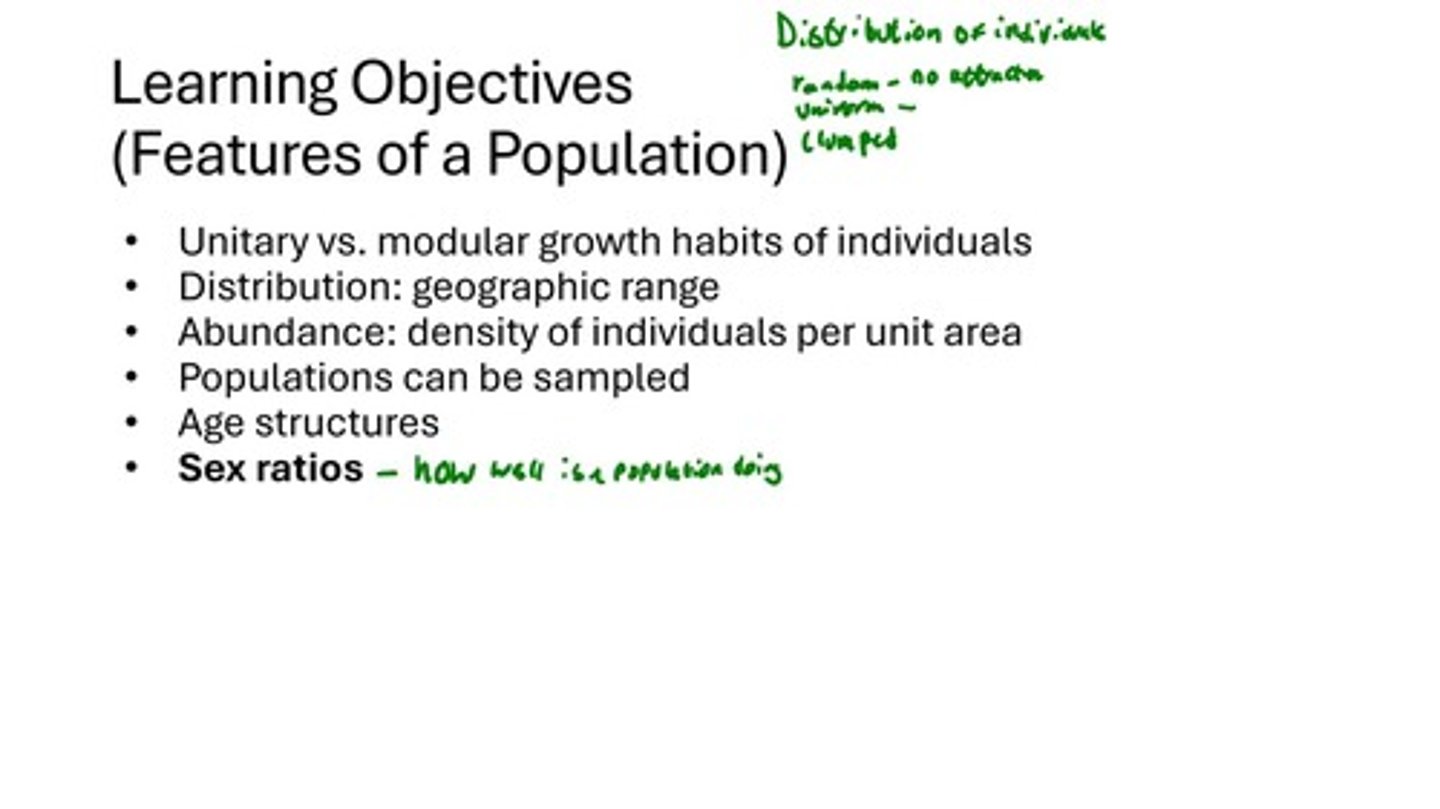
What is the importance of sex ratios in assessing population health?
Sex ratios help determine how well a population is doing by indicating the balance between males and females.
How does the age structure of a population affect its growth potential?
The age structure indicates the number of individuals that are capable of reproduction, influencing future population growth.
What can be inferred from a stable age structure in a population?
A stable age structure suggests that the population is neither growing nor declining significantly.
What role does reproductive status play in defining age classes?
Reproductive status helps categorize individuals into pre-reproductive, reproductive, and post-reproductive classes.
What does 'abundance' refer to in population studies?
The density of individuals per unit area.
What is the geographic range in the context of populations?
The distribution of a species across different geographic areas.
What is the standard size of a plot in the CVS protocol?
A plot usually consists of 10 modules configured in a 5 x 2 pattern, covering 1000 m² (1/10th of a hectare).
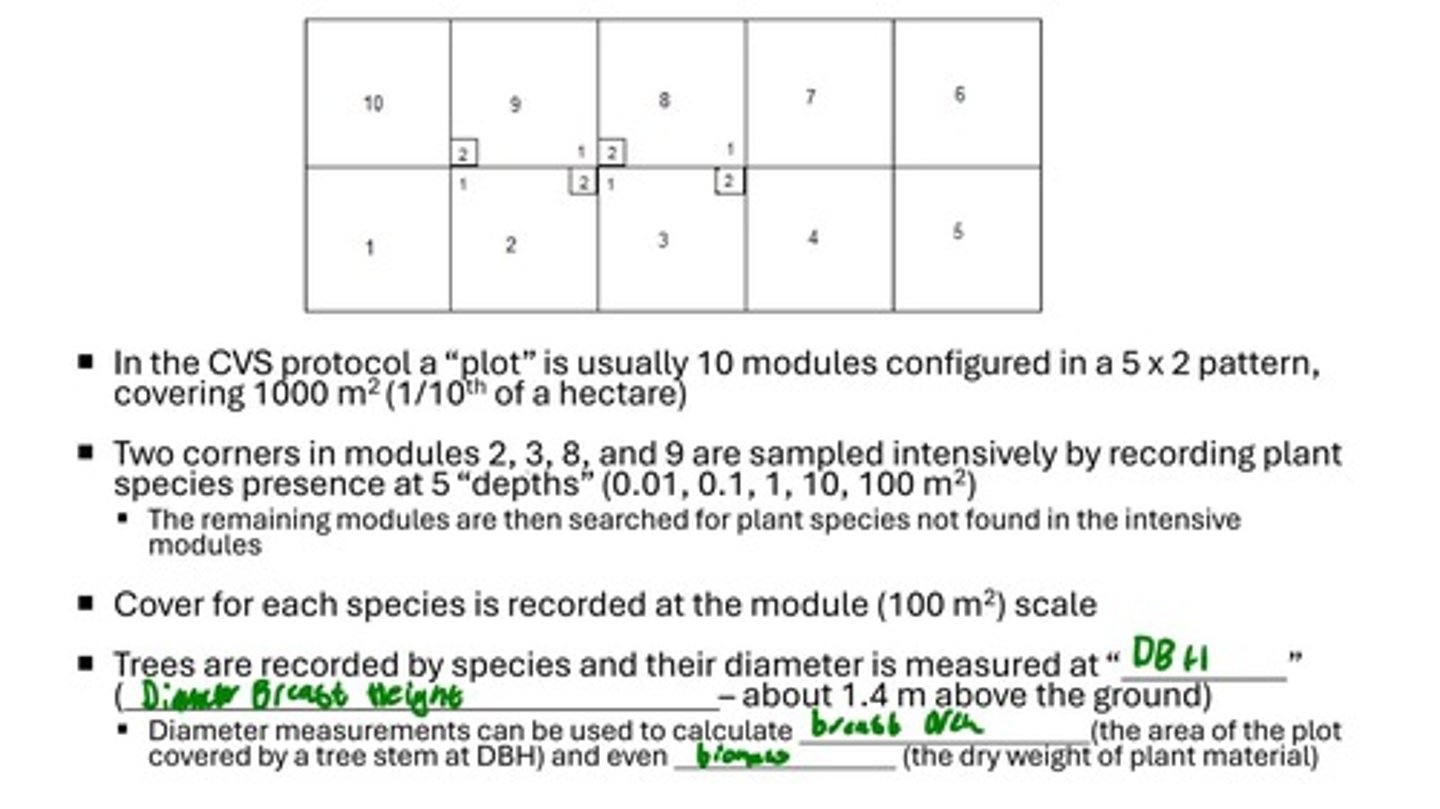
What depths are used for intensive sampling in the CVS protocol?
Intensive sampling records plant species presence at 5 depths: 0.01, 0.1, 1, 10, and 100 m².
How is cover for each species recorded in the CVS protocol?
Cover is recorded at the module (100 m²) scale.
What is measured at Diameter Breast Height (DBH)?
The diameter of trees is measured about 1.4 m above the ground.
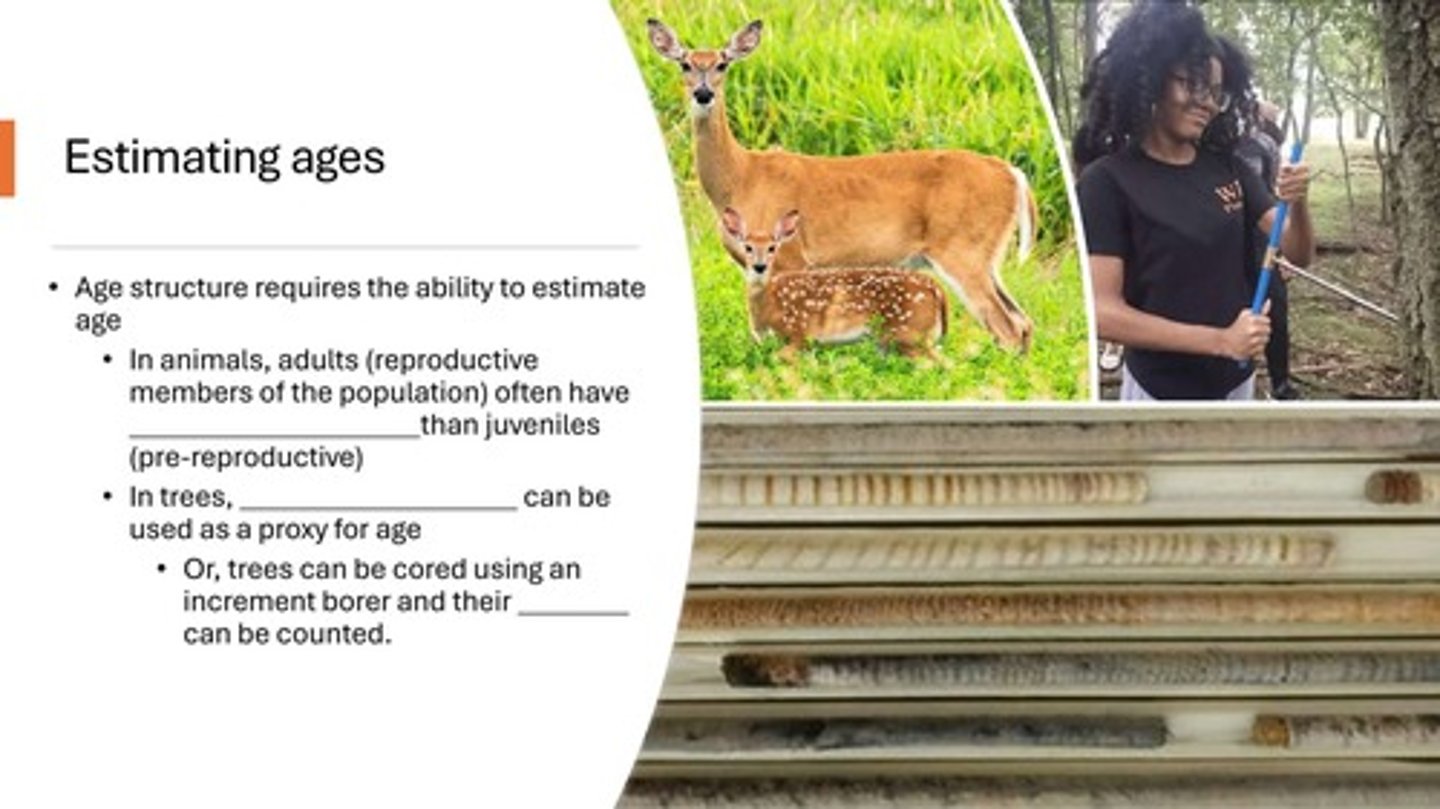
What can diameter measurements at DBH be used to calculate?
They can be used to calculate the area covered by a tree stem at DBH and even biomass (the dry weight of plant material).
What is the purpose of using permanent plots in plant population sampling?
Permanent plots can be resampled for long-term studies.
What caution must be applied when using statistics in resampling studies?
Caution must be applied due to the violation of independence in pseudo-replication.
What is pseudo-replication in ecological studies?
Pseudo-replication occurs when the assumption of independence is violated in sampling.
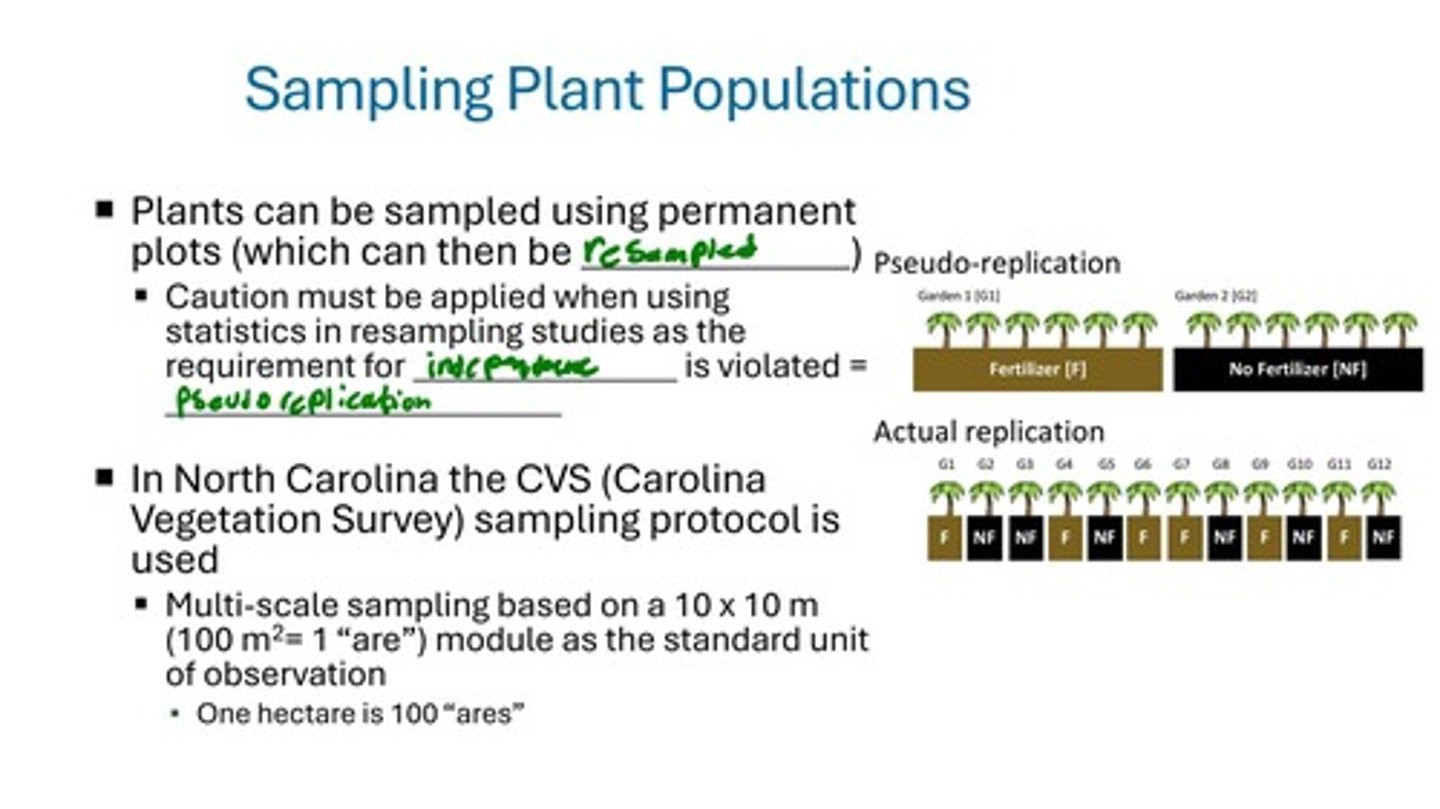
What is the standard unit of observation in the CVS sampling protocol?
The standard unit of observation is a 10 x 10 m (100 m² = 1 'are') module.
How many ares are there in one hectare?
One hectare is equivalent to 100 ares.
What method is typically used to estimate population size in motile organisms?
Mark-recapture methods are used to estimate population size.
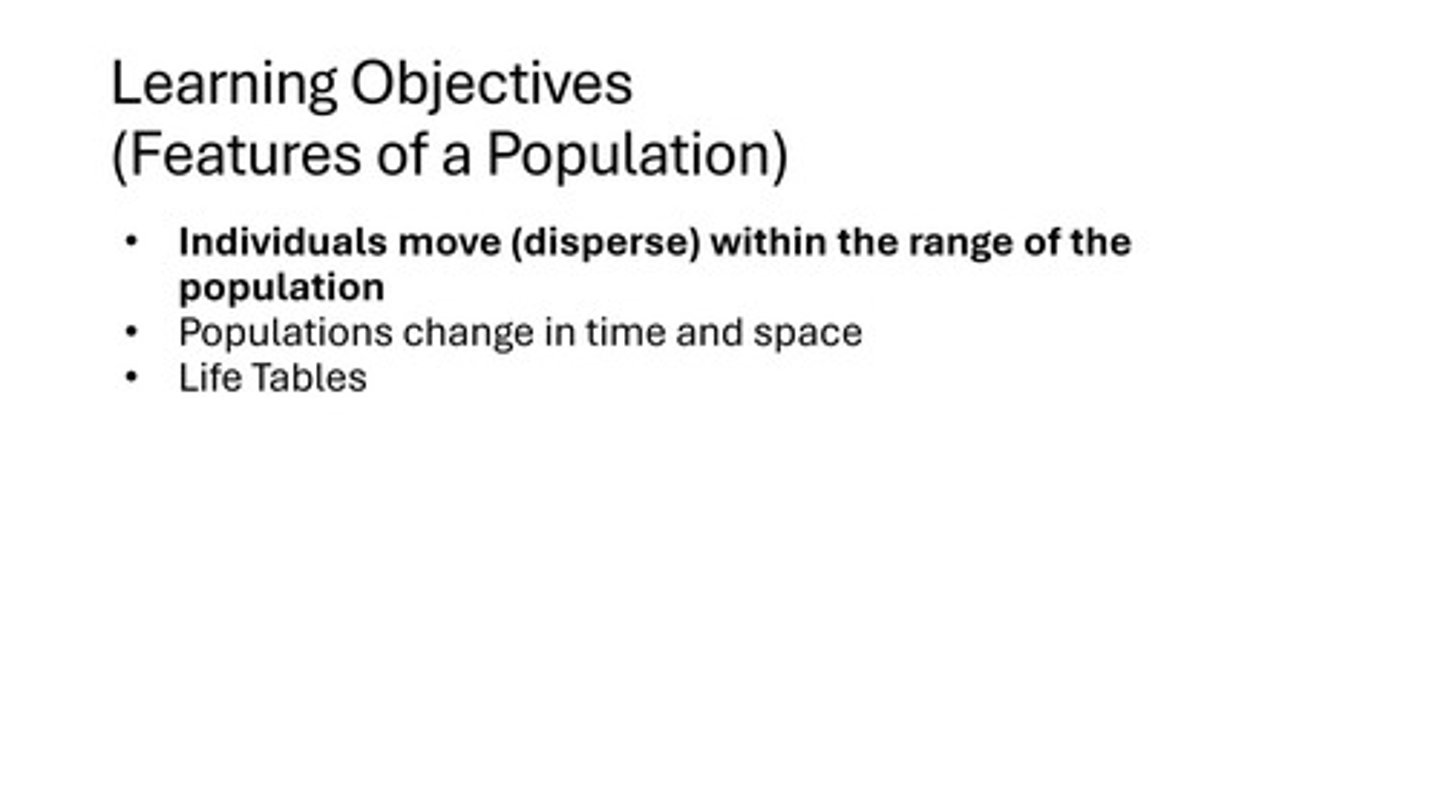
What is the formula for estimating population size using mark-recapture?
N = nM/R, where N is the population size, M is the number of individuals marked at t₁, n is the number of individuals captured at t₂, and R is the number of marked individuals recaptured at t₂.
If M = 4, n = 4, and R = 2, what is the estimated population size (N)?
N = (4 * 4) / 2 = 8.
What are the two types of population structures mentioned?
Unitary and modular growth habits.
What is the significance of age structures in population studies?
Age structures provide insights into the demographics and potential growth of a population.
What does the sex ratio indicate in population studies?
The sex ratio indicates the proportion of males to females in a population.
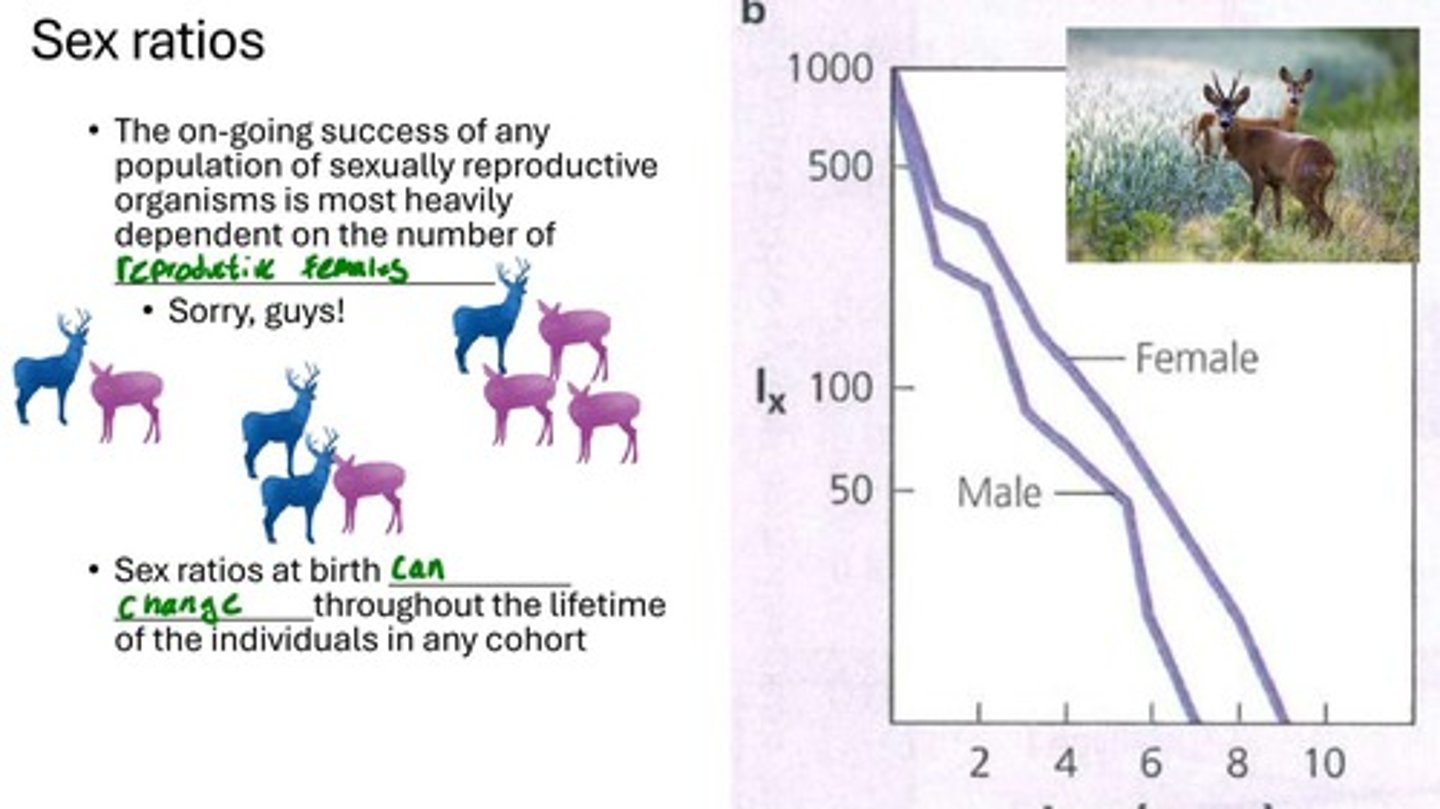
What is the purpose of sampling populations?
Sampling populations helps in understanding the dynamics and characteristics of species within an ecosystem.
What is the role of the Carolina Vegetation Survey (CVS)?
The CVS provides a standardized protocol for sampling and studying vegetation in North Carolina.
What are the three types of population distribution patterns?
Clumped, uniform, and random.
What is a clumped distribution in populations?
A clumped distribution occurs when organisms are attracted to one another, often due to facilitation, protection, patchy resources, asexual reproduction, or social groups.
What causes a uniform distribution in populations?
Uniform distributions are usually the result of repulsion among individuals, often due to competition, territoriality, or parasite loads.
What characterizes a random distribution in populations?
Random distributions occur when the location of any one individual is independent of the location of others, meaning individuals neither attract nor repel each other.
What does abundance refer to in population ecology?
Abundance refers to the number of individuals within a population.
How is population density defined?
Density is defined as the number of individuals per unit area, often expressed as #/ha.
What is a hectare equivalent to in acres?
A hectare is about 2.5 acres.
What is the significance of spatial distribution in populations?
The spatial distribution can provide insights into intraspecific interactions within a species.
What are metapopulations?
Metapopulations are subpopulations linked by migration.
How do populations at small scales differ from those at larger geographic scales?
Populations that range over wide geographic areas may have smaller local subpopulations that may or may not interact directly.
What invasive plant is mentioned in the notes, and what is its impact?
Japanese stilt grass (Microstegium vimineum) is an aggressive invader in specific habitats, often dominating areas with other invasive species.
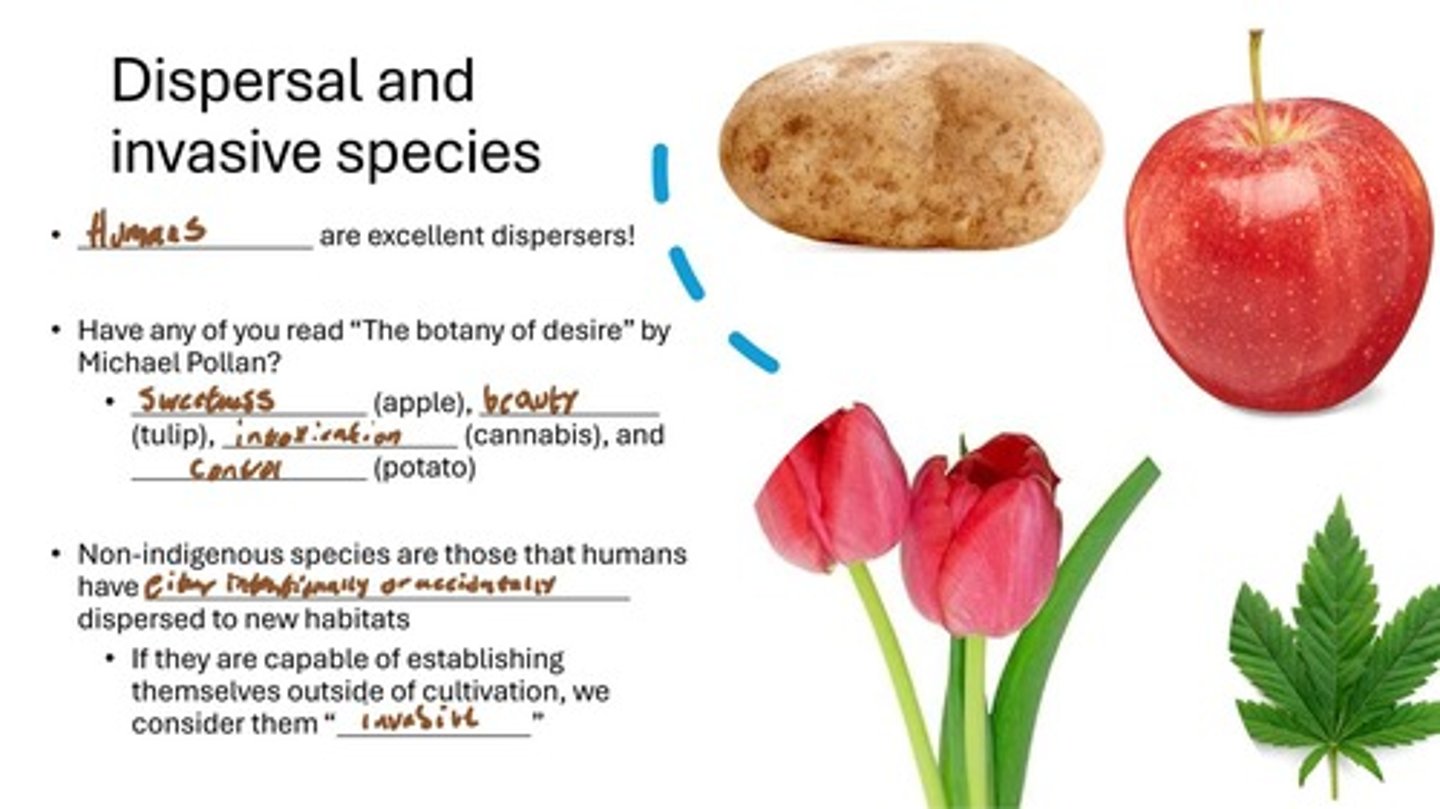
What are some examples of invasive plants found in Battle Park?
Japanese honeysuckle (Lonicera japonica) and Chinese privet (Ligustrum sinense) are also found in Battle Park alongside Japanese stilt grass.
What factors influence the distribution of organisms at various scales?
Local microclimates and interactions with other species will influence distribution.
What is the relationship between geographic range and population distribution?
The geographic range indicates where a species can be found, but organisms will not be found everywhere within that range.
What does the term 'age structures' refer to in population studies?
Age structures refer to the distribution of individuals of different ages within a population.
What does 'sex ratios' indicate in population ecology?
Sex ratios indicate the relative number of males to females in a population.
What is the role of sampling in population studies?
Populations can be sampled to gather data on their characteristics, such as abundance and distribution.